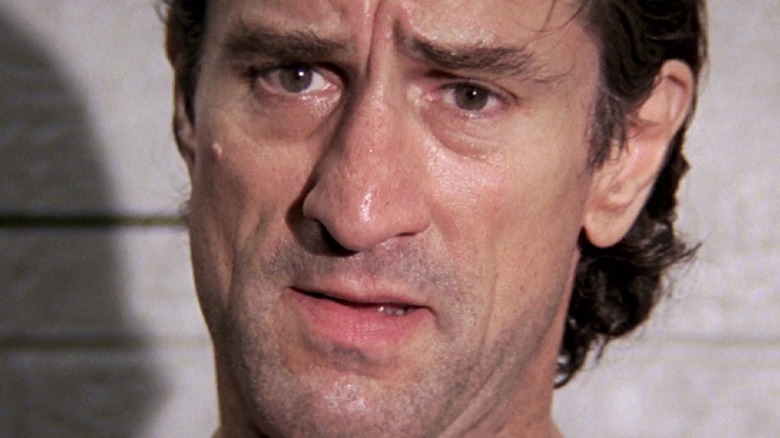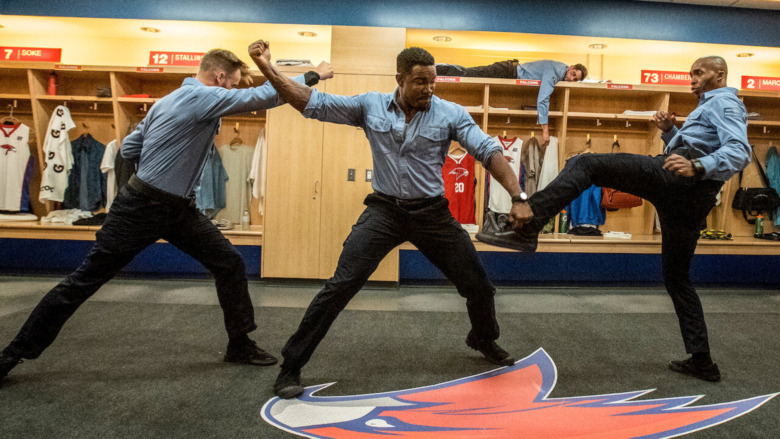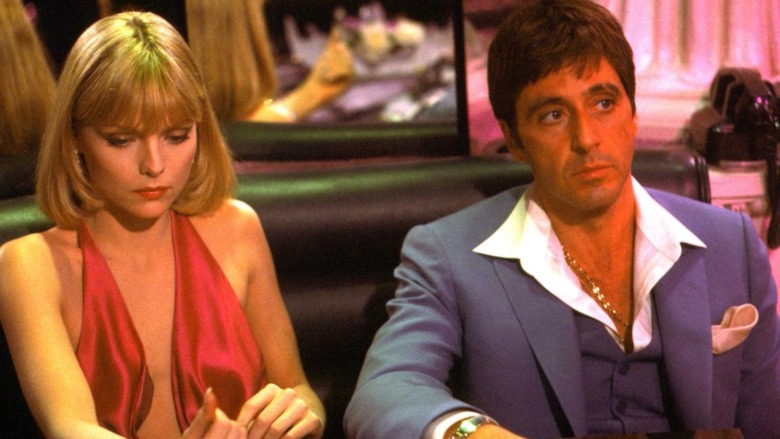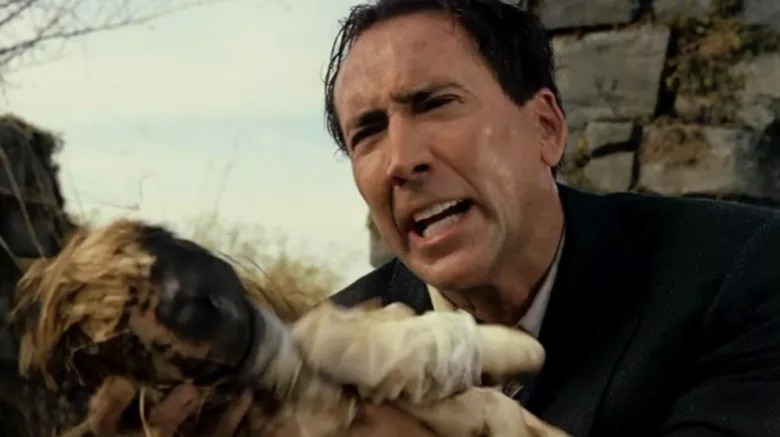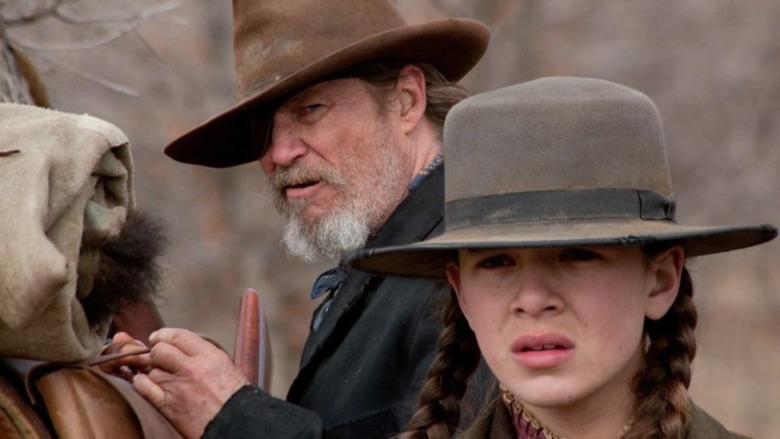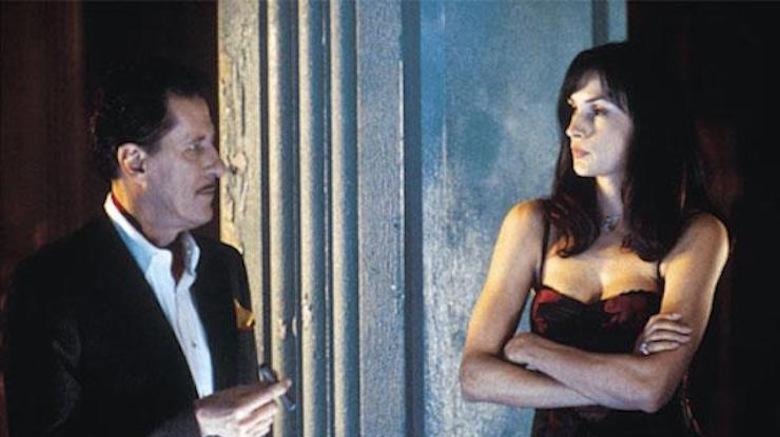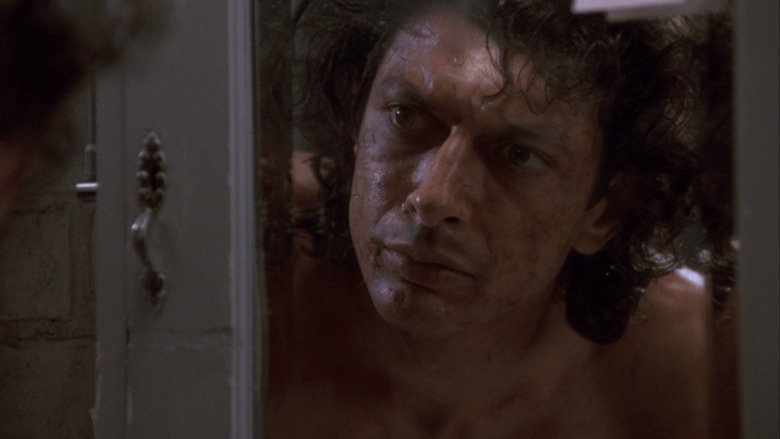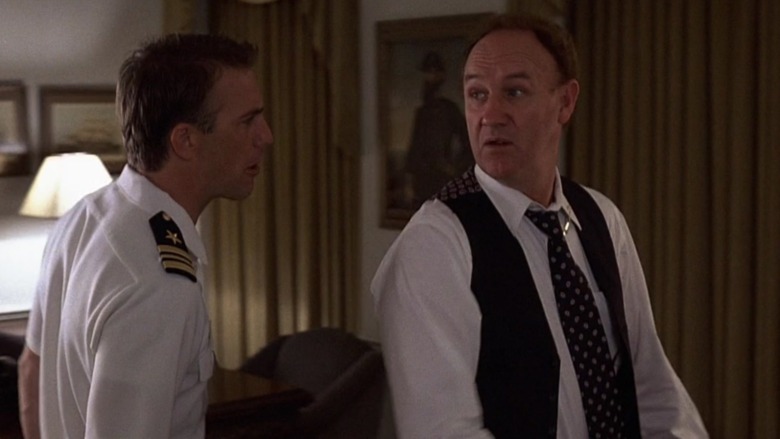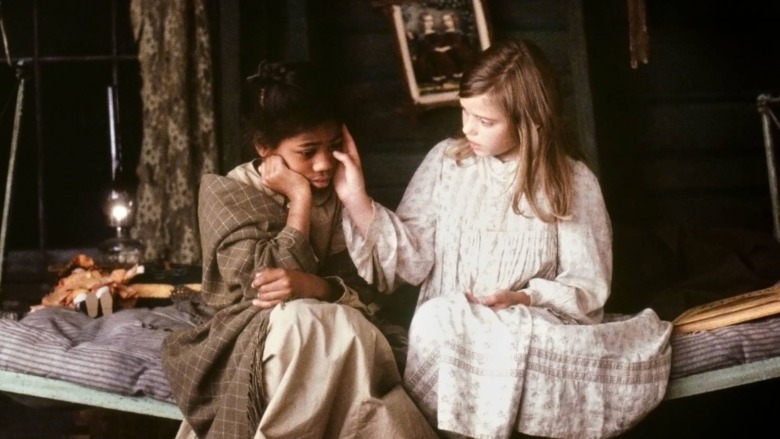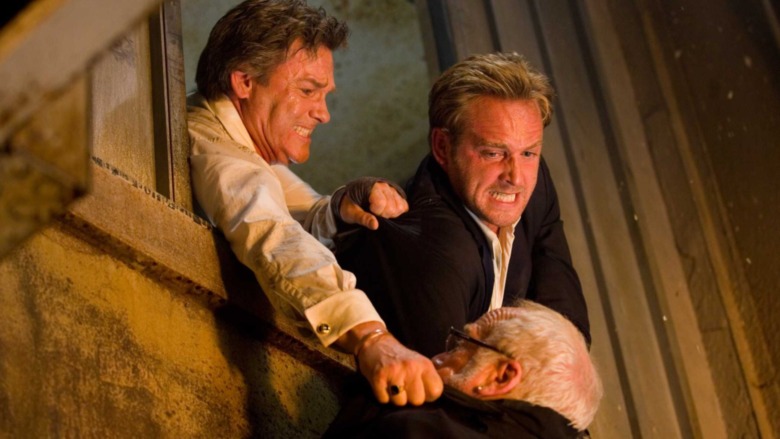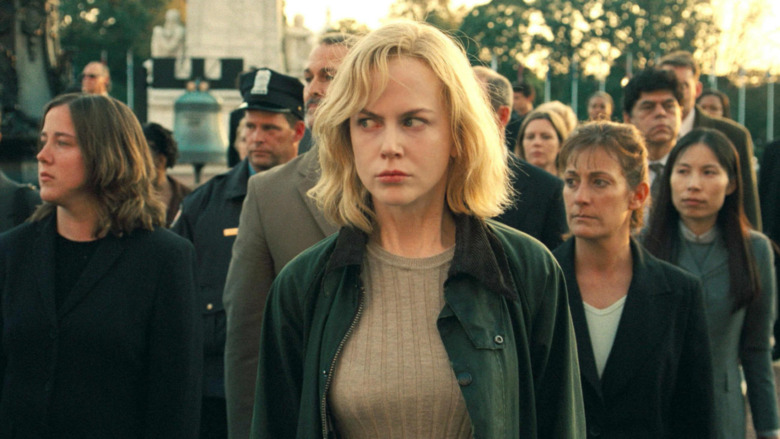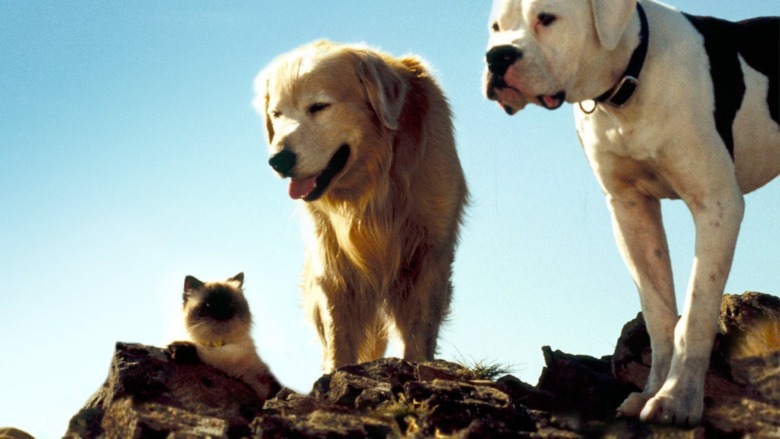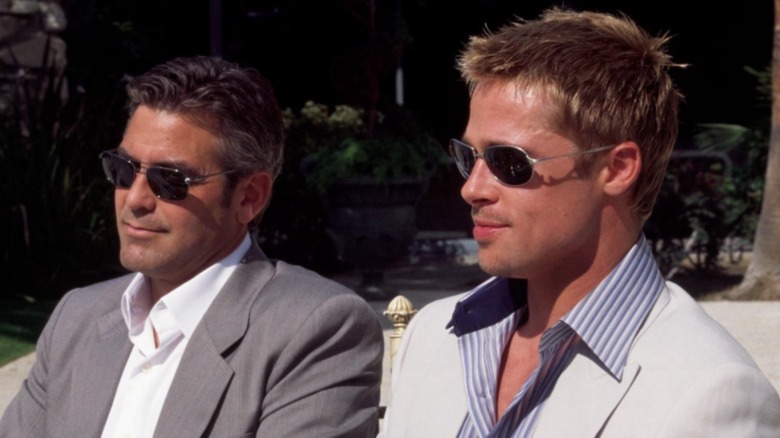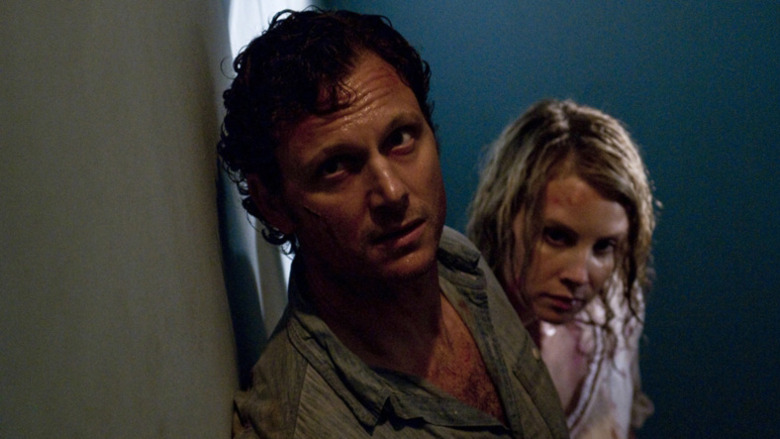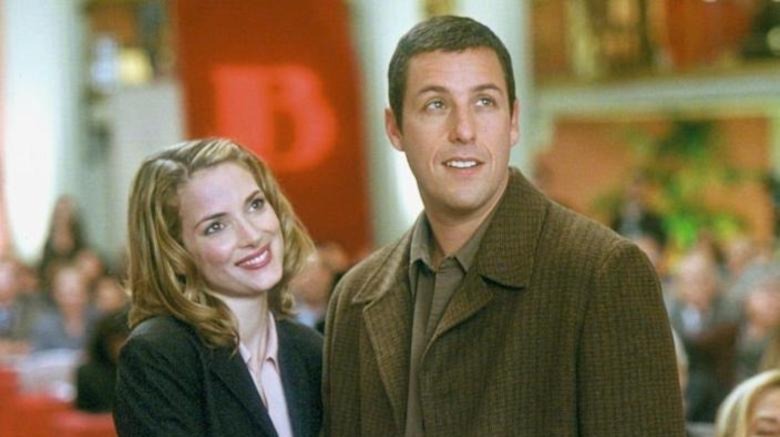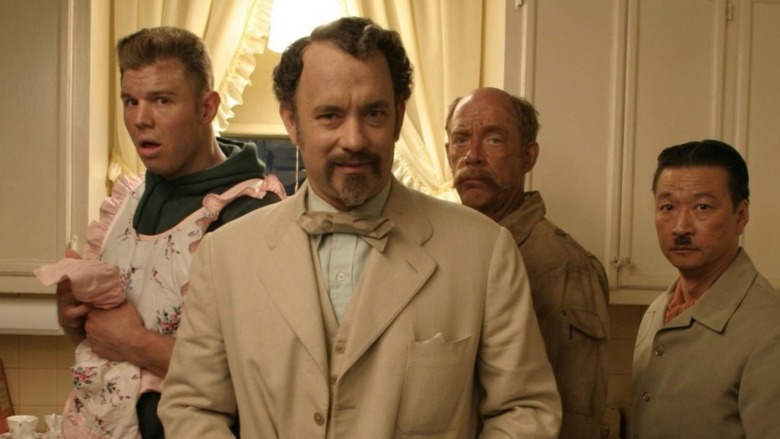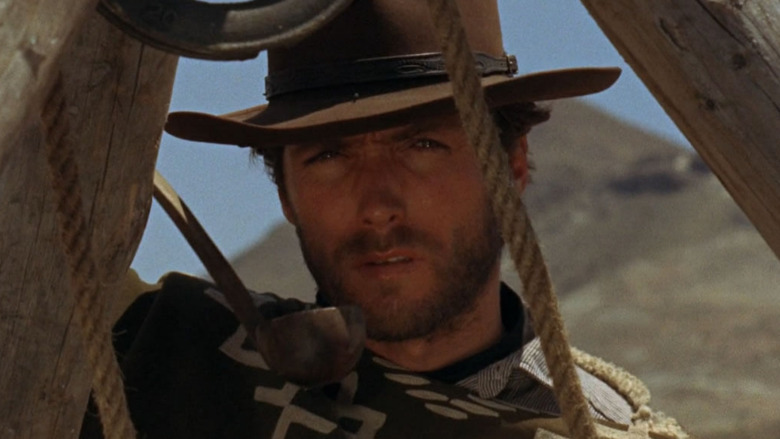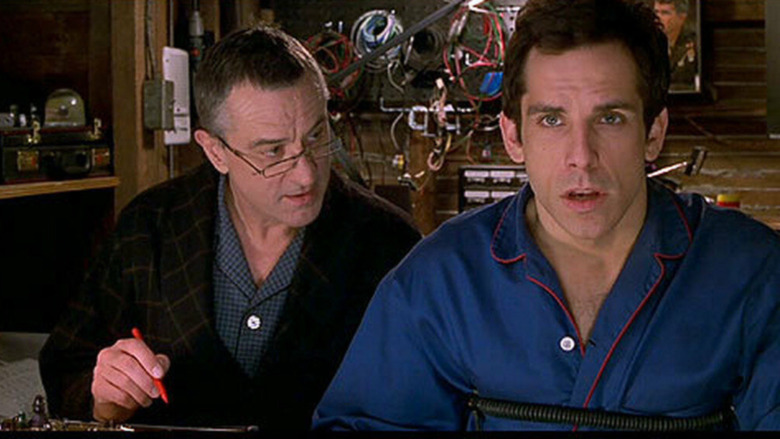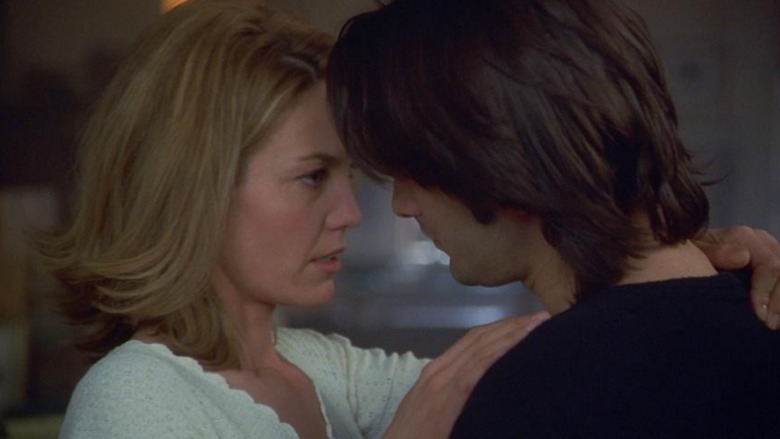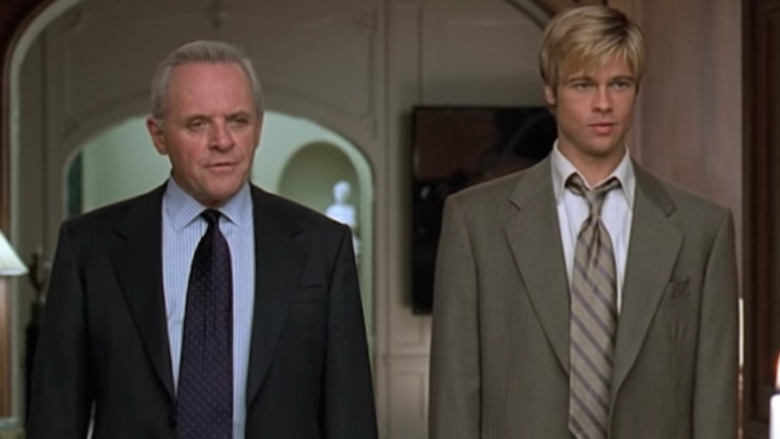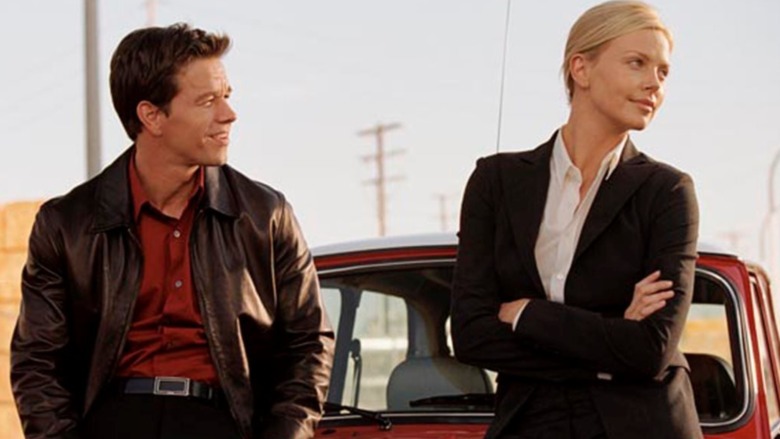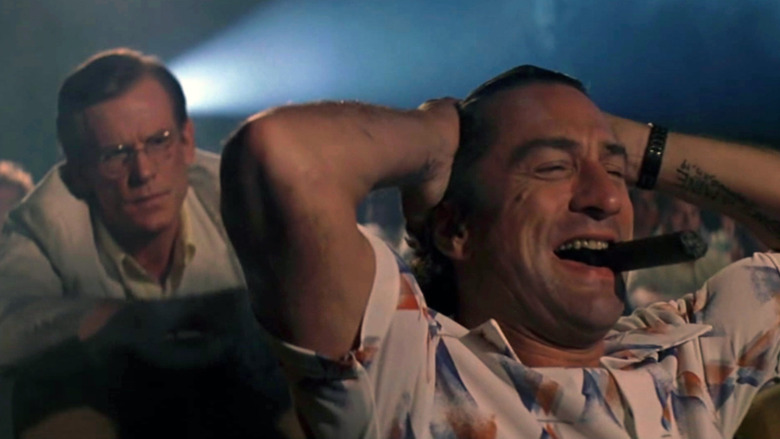Movies You Didn't Know Were Remakes
These days it seems like there are more remakes, revivals, and re-imaginings than ever on the big screen. It makes sense, considering there are also more places to watch movies than ever before, and streaming services need to keep filling their rosters with fresh content. But if you take a closer look, you'll realize that Hollywood has always been cyclical.
More recent films like Bradley Cooper's "A Star is Born," David Gordon Green's "Halloween," and Peter Jackson's "King Kong" are just some of the bigger remakes that have occupied recent headlines, but creatives have long been putting their own spin on classic (as well as fringe) stories. But while you may have your favorite iteration of "The Magnificent Seven" or "Dawn of the Dead," you might be surprised to learn the following films aren't so original as you thought. From classic gangster films to beloved heist flicks, these are the movies you didn't know were remakes.
Welcome to Sudden Death
It's hard to imagine anyone capturing the extreme energy that is Jean-Claude Van Damme, but Michael Jai White held his own in the 2020 remake of "Sudden Death," titled "Welcome to Sudden Death." Van Damme starred as a hockey stadium security guard in the original 1995 action flick from director Peter Hyams, where he fought to save the entire crowd and his two daughters from being blown to smithereens. Its $35 million production budget pulled in a dismal $65 million worldwide, and the film completely divided critics, but to this day, it has its advocates.
Director and screenwriter Dallas Jackson pulled many of those same story threads in the updated version (a security guard with two kids has to save them and the fans at a basketball stadium from a terrorist attack), and while it doesn't have the best Rotten Tomatoes score, it did break into the Top 10 on Netflix when it dropped in 2020. And as writer Mike Floorwalker pointed out, "'Welcome' is a flick that greatly benefits from its winking self-awareness and from White's winning performance."
Scarface
Is there a cinematic character more iconic than Al Pacino's Tony Montana? Spout "say hello to my little friend" at any party anywhere, and everyone immediately knows you're referencing "Scarface." There are few gangster movies that hold up to the 1983, Brian De Palma-directed movie, which was written by Oliver Stone. Not only does it hold a 93% audience rating on Rotten Tomatoes, but it pulled in an 8.9 score with users on Metacritic. Plus, it's the movie that put a then 25-year-old Michelle Pfeiffer on the map as Elvira Hancock.
So some may be surprised to hear that the movie wasn't the first of its kind. Back in 1932, "Scarface" first debuted with Paul Muni in the leading role of Tony Camonte, an immigrant who turned to the gangster lifestyle in Chicago. That flick was based on the 1930 novel "Scarface" by Armitage Trail, who based his novel on the notorious gangster Al Capone. This tale of an outsider working his way up the criminal ladder is a story perfect for any era, and if you haven't caught the original, it's worth a side-by-side watch just to catch the similarities, despite the character and location changes.
The Woman in Black
In 2012, after the "Harry Potter" films wrapped, Daniel Radcliffe set out to prove he was more than just the Boy Who Lived with an adaptation of Susan Hill's 1983 novel, "The Woman in Black." The gothic supernatural film was definitely a departure from the wizarding world, despite how dark that J.K. Rowling franchise eventually became.
However, Radcliffe and director James Watkins weren't the first to tackle this tale of a solicitor who travels to a small town to settle an estate, only to figure out the whole town is haunted. In 1989, U.K. filmmakers attempted a straight-to-TV adaptation of the novel, one that was nominated for four below-the-line BAFTA awards that year. Watkins' adaptation didn't hit the same note with critics, but it did rake in nearly $130 million in the global box office against a budget of $15 million. The film was successful enough to earn a sequel, "The Woman in Black: Angel of Death," in 2015. However, neither Radcliffe nor Watkins were involved.
The Wicker Man
Updated cinematic tricks and visual effects don't always do a horror thriller good, especially when you're talking about a remake of a movie that was already considered pretty great. Enter Nicolas Cage playing a cop, one who arrives to solve the disappearance of a girl in a paganist community in Neil LaBute's "The Wicker Man."
When it debuted in 2006, not everyone recognized that the movie was an updated version of the 1973 offering starring Edward Woodward and directed by Robin Hardy. However, in horror circles, that film has been praised over the years for its particular spooks and turns — especially its horrific ending. The same cannot be said for Cage's adaptation. Viewers largely panned the movie at the time of its release thanks to its unintentional comedy and its failure to incorporate scares in a cohesive way. In other words, if you're looking for a creepy watch and aren't familiar with either film, stick with the original.
True Grit
The Coen brothers had long established themselves as some of Hollywood's most influential filmmakers when they decided to update "True Grit" in 2010. However, considering the filmmakers had already amassed legions of newer fans with projects like "Fargo," "The Big Lebowski," and "No Country For Old Men," not everyone knew that the film was actually a remake of the 1969 movie starring cowboy legend John Wayne. Not even the Coen brothers admitted the flick was a remake, insisting they were basing their own movie directly on the 1968 novel of the same name by Charles Portis (which, yes, also inspired the original).
Those who had caught the first movie weren't buying it though. That flick was what landed Wayne his only Oscar win, and while Jeff Bridges put his own spin on the character of Rooster Cogburn, it was a tough act to follow. Still, the updated take did put Hailee Steinfeld on the map thanks to her breakout role as vengeful teen Mattie Ross, and while the movie didn't take home any Oscar wins, it was nominated for 10 awards, including Best Picture, Best Director, and Actor and Actress for Bridges and Steinfeld, respectively.
House on Haunted Hill
In 1999, Geoffrey Rush, Famke Janssen, Taye Diggs, Peter Gallagher, Chris Kattan, Ali Larter, and Bridgette Wilson-Sampras came together to deliver an updated version of "House on Haunted Hill." At that point, it had been four decades since the original Vincent Price-led, Frank Castle-directed film first hit theatres in 1959, so the update had the chance to usher in new fans. It was the first project for Dark Castle Entertainment, a production label originally intended to remake all of Castle's legendary films. Like many horror movie updates, the more recent iteration injected its scares with newer technology and special effects under new director William Malone, but that wasn't the only difference between the movies.
While both films begin with the same premise (a group of strangers are told they'll earn a large sum of cash if they can survive the night in a haunted location), the original film actually takes place in a haunted house, while the remake uses a shut-down insane asylum as the backdrop. From there, tales of deceit, betrayal, supernatural forces, and other creepy occurrences go down. But while almost everything can be logically solved in the original iteration, the ghosties are real in the updated take. As for Dark Castle Entertainment? It went on to remake another Castle classic, "13 Ghosts," before expanding its vision and tackling original films.
The Fly
Think of Canadian director David Cronenberg, and you'll inevitably conjure up images of Jeff Goldblum as a half-man, half-insect from the 1986 body horror film "The Fly." However, that box office success story (which also starred Geena Davis) wasn't the first big-screen offering based on George Langelaan's 1957 short story. In 1958, director Kurt Neumann put his spin on the tale of a scientist whose life is irrevocably changed after testing out his teleportation device. Actor Al Hedison, horror legend Vincent Price, and Patricia Owens comprised the cast, and that offering was successful enough to spawn two sequels (1959's "Return of the Fly" and 1965's "Curse of the Fly").
But those films were largely forgotten by the time Cronenberg put his stamp on the story, especially since the AIDS pandemic was rampant at the time and many felt the movie was a metaphor for the virus, despite Cronenberg's original intent to comment on aging and death. Either way, the second iteration of the story is still considered the director's greatest film. Plus, it also launched a sequel, "The Fly II," which was directed by makeup effects artist Chris Walas, the guy who took home an Oscar for the Cronenberg iteration alongside makeup artist Stephan Dupuis.
No Way Out
In 1987, emerging star Kevin Costner was having quite the big year, what with his starring role alongside Sean Connery in "The Untouchables" and as the lead protagonist, Tom Farrell, in the politically charged thriller "No Way Out." In the latter, Ronald Donaldson-directed film, Costner plays a navy lieutenant who investigates the murder of a woman he was romantically involved with. But when the scandalous circumstances surrounding her death arise, it sets off a string of high-stakes events.
The movie also starred Gene Hackman and Sean Young, and it was quite the hit with critics at the time of its debut. However this wasn't the first time Kenneth Fearing's 1946 novel, "The Big Clock," had been translated to the big screen. In 1948, John Farrow directed a film called "The Big Clock," which featured a magazine tycoon who commits the murder. And in 1976, French director Alain Corneau took a stab at the story with "Police Python 357." While all three films differ in terms of lead characters and their job descriptions, all three offer up that neo-noir vibe set out in the original tome.
A Little Princess
If you grew up in the 1990s, you probably have vivid memories Alfonso Cuarón "A Little Princess." The movie revolves around a little girl named Sara Crewe (Liesel Matthews) whose adoring father leaves her at a boarding school to serve in the war. When her dad (Liam Cunningham from "Game of Thrones") goes missing and is presumed dead, Sara winds up as one of the school's servants under the mean boss, Miss Minchin (Eleanor Bron).
The inevitably sad story is based on a 1905 book of the same name by Frances Hodgson Burnett and was the formative stuff of a generation. So it may surprise you to learn that the 1995 offering wasn't the first big-screen adaptation of the story. Another "Little Princess" hit theatres in 1939 and starred the famous child actor Shirley Temple in the role of Sara, and it was equally beloved in its time. In fact, to this day, it's still considered one of Temple's greatest movies.
The Upside
In 2017, Kevin Hart and Bryan Cranston starred in the Toronto International Film Festival premiere of the funny but heartfelt dramedy "The Upside," in which a wealthy paraplegic (Cranston) hires a man with a criminal record named Dell (Hart) to help him out. Right away, the movie ran into problems, with the Weinstein Company selling the film off in the wake of the lawsuit against Harvey Weinstein and Hart being hired and then fired from hosting the Oscars.
Still, the upside to "The Upside" was that it fared well with audiences when it finally opened in theatres in 2019, pulling in just over $125 million at the global box office. What many moviegoers didn't realize was that the film is actually a remake of the 2011 French film "The Intouchables." While both share a similar premise, there are a few key differences, including the setting (New York versus Paris), the Yvonne character's love interest storyline (played by Nicole Kidman in the American version), and the addition of Dell's son.
Endless Love
To celebrate Valentine's Day in 2014, director Shana Feste unleashed young love on moviegoers everywhere with this adaptation of Scott Spencer's 1979 novel. The movie starred Gabriella Wilde and Alex Pettyfer as Jade and David, the pretty things who wrap themselves up in each other, much to Jade's father's chagrin. The film was definitely targeted at a younger generation who grew up with shows like "Gossip Girl," as it was co-written by former show scribe Joshua Safran and produced by the series' executive producer Josh Schwartz.
In other words, it's understandable if viewers didn't catch on that the widely panned movie is technically a remake of the 1981 movie starring Brooke Shields and Martin Hewitt. That film was also based on Spencer's novel, but its plot turns were much different than the updated version. Still, the 1981 movie deserves a place in the pop culture vault. It isn't beloved by audiences or anything, but the movie does feature the film debuts of Ian Ziering and Tom Cruise, plus it helped to popularize the "Endless Love" collaboration between Diana Ross and Lionel Richie, aka the prom anthem that topped Billboard charts.
Poseidon
There was no shortage of star power in the 2006 ocean survival thriller "Poseidon," which featured the likes of Kurt Russell, Josh Lucas, Emmy Rossum, Andre Braugher, and Richard Dreyfuss. The Wolfgang Petersen movie shot under a whopping $160 million budget, and it was estimated to have wrapped with a net $77 million loss after only pulling in $181 million at the global box office. Peterson — best known for hits like "Air Force One" and "In the Line of Fire" — later revealed he regretted ever taking on the project.
It was a different story in 1972, however, when director Ronald Neame helmed the first on-screen iteration of Paul Gallico's 1969 novel. "The Poseidon Adventure" starred Gene Hackman and Shelley Winters, and it earned nine Oscar nominations, including wins for Best Original Song and Visual Effects. That version also fared well with critics and viewers, who practically doubled the lousy Rotten Tomatoes scores of the remake.
The Invasion
Just because you change the name of a film doesn't make it any less a remake. At least, that's the case with Oliver Hirschbiegel's 2007 film "The Invasion," which is the fourth (yup, fourth) film adaptation of "The Body Snatchers," a 1955 novel by Jack Finney. There's no denying the project was buzzworthy though, what with Nicole Kidman and Daniel Craig in the leading roles. The movie follows a psychiatrist (Kidman) as she figures out aliens are coming to get everyone, and her son (Jackson Bond) may be the only person who can stop them.
It's a female-led, updated take on the 1956 offering "Invasion of the Body Snatchers," as well as the 1978 Philip Kaufman release of the same name (starring Donald Sutherland, Jeff Goldblum, and Leonard Nimoy, among others). And of course, those are separate projects from the 1993 offering "Body Snatchers," from director Abel Ferrara, in which a teen girl (Gabrielle Anwar) and her dad (Terry Kinney) try to save people from the invasion on a military base. Of all the iterations, it's still the first two films that critics and viewers responded to best, so if you find yourself deciding between all four you may want to lean towards the early years.
Homeward Bound: The Incredible Journey
Who needs humans when you can create an entire film based on a trio of adorable, talking pets? In 1993, Disney and director Duwayne Dunham recruited Michael J. Fox, Don Ameche, and Sally Field to voice the two dogs and a cat at the center of "Homeward Bound: The Incredible Journey," in which the animals traverse the Sierra Nevada mountains to return home. Families were definitely there for it, and the movie was a box office hit, pulling in more than $40 million worldwide. It was enough to prompt a San Francisco-based sequel three years later, with Field and Fox reprising their original roles. (Ralph Waite replaced Ameche as Shadow since Ameche passed away in late 1993.)
That's not too shabby considering the movie was actually an updated version of the Mouse House's 1963 film "The Incredible Journey." Of course, in the original film, the animals don't talk, which definitely differentiates things. And like the book of the same name on which both movies are based, the original takes place in Ontario, Canada.
Ocean's Eleven
It's hard not to be blinded by the sheer star power that drove "Ocean's Eleven" to a box office win when it first debuted in 2001. Director Steven Soderbergh recruited Brad Pitt, George Clooney, Matt Damon, Bernie Mac, Carl Reiner, Julia Roberts, and a slew of other notable faces to pull off the heist drama, which was filled with twists and turns against its Las Vegas casino setting.
But it's no wonder the movie attracted such high-caliber talent, as it was based on an original 1960s Rat Pack film of the same name. And who better to fictionalize Vegas than the Rat Pack? It later came out that the new cast members weren't exactly fans of the original film (starring Frank Sinatra, Dean Martin, and Sammy Davis Jr.), but $450 million worth of global moviegoers would probably agree that the new class earned themselves the right to criticize — especially since they came together again in 2004's "Ocean's Twelve" and 2007's "Ocean's Thirteen."
The Last House on the Left
Years before Tony Goldwyn was being all presidential with Kerry Washington on "Scandal," he was the epitome of a father out for justice in this 2009 revenge horror flick. The movie also starred Monica Potter, Sara Paxton, Aaron Paul, and Garret Dillahunt, and it toyed with the idea of how far a scorned family would go to avenge their daughter after a gang of miscreants attacked her.
Director Dennis Iliadis didn't have to go too far for inspiration though. "The Last House on the Left" was a remake of horror master Wes Craven's 1972 offering of the same name, which also happened to be his debut movie. That movie was made on a shoestring budget ($87,000), but it pulled in more than $3 million at the box office. The project has been applauded for being an "anti-establishment shocker" and the first of its kind, so in spite of the remake's notable cast, bigger budget, and Craven's return to produce, it wasn't quite as well received as the original.
Mr. Deeds
Adam Sandler fans are a pretty loyal bunch, which probably explains why 2002's "Mr. Deeds" snagged a 59% approval rating on Rotten Tomatoes compared to the 21% critical score. And sure, it's one of the lesser loved Sandler projects out there, but the movie does have its proponents. That could be in part due to the Winona Ryder stans out there, but perhaps it's also because "Mr. Deeds" has a solid storyline that's actually based on the 1936 romantic dramedy "Mr. Deeds Goes to Town."
That film, which in turn is based on the 1935 short story "Opera Hat," starred Gary Cooper and Jean Arthur in the leading roles. Perhaps it was a lack of frostbitten feet and fire poker scenes or maybe audiences just responded better to Cooper as their leading man, but regardless, both critics and audiences were way more into the original movie under the direction of Frank Capra.
The Ladykillers
The Coen brothers already had a successful string of movies to write home about in 2004, including instant classics like "Fargo" and "The Big Lebowski." But they were also coming off the glossier Universal Pictures rom-com "Intolerable Cruelty," which to this day is considered one of their worst films.
So it was a gamble when they opted to remake the beloved 1955 British movie "The Ladykillers." In fact, the Coens and star Tom Hanks were aware that Brit viewers were "going to crucify" them for doing it. Yet they went about this comedy of errors in their own way, updating the characters and setting for an American audience that wasn't as aware of the original, Alexander Mackendrick-directed project starring Peter Sellers.
In the 2004 film, Hanks stars as a professor who charms his way into renting a room from an unassuming older lady (Irma P. Hall), but then he and his criminal buddies pose as musicians in order to use her home to rob a casino. The result is another divisive film that managed to do one positive thing for the filmmakers — it finally changed some critics' minds about which Coen brothers movie is the worst.
A Fistful of Dollars
Western fans fondly remember Clint Eastwood from Sergio Leone's "A Fistful of Dollars," which hit theaters back 1964 and was the "Dirty Harry" star's first major, big-screen role. (He'd already established himself as Rowdy Yates in TV's "Rawhide" by that point.) The story of a gunfighter who pits two feuding families against each other was so well received that it spawned two Eastwood follow-ups: "For a Few Dollars More" and "The Good, the Bad and the Ugly."
The problem was that the original film wasn't so original. It was actually an unofficial (read "unlicensed") remake of a 1961 Japanese samurai film called "Yojimbo." When filmmaker Akira Kurosawa found out about "Fistful," he sued Leone, and the pair eventually settled out of court. However, despite the drama, both films are incredible, influential flicks, and when comparing Eastwood's gunslinger to Toshiro Mifune's samurai, well, it's hard to decide who's cooler.
Meet the Parents
There were more than a few quotable lines to come from Jay Roach's "Meet the Parents" when it hit theatres in 2000. The story of Greg Focker (Ben Stiller) meeting his girlfriend's parents (played by Robert De Niro and Blythe Danner) was a massive box office hit and even spawned two sequels, "Meet the Fockers" and "Little Fockers."
What most fans might not realize though is that the film is actually a remake of a 1992 movie called "Meet the Parents," co-written, directed, and starring Greg Glienna. After the film's release, Universal Pictures acquired the right to adapt the darkly comedic story of a man coming home to meet his partner's parents and everything going wrong. New writers Jim Herzfeld and John Hamburg took out some of the original film's more morbid elements in the remake (suicide, a dog drowning, and a shooting, among other twists). The result was a positively reviewed comedy that was nominated for a handful of awards and had everyone rethinking De Niro's nipples.
Unfaithful
Richard Gere, Diane Lane, and Olivier Martinez had viewers everywhere saying "oh-la-la" after taking in this steamy 2002 movie about a wife whose life unravels in the wake of an unexpected extramarital affair. Director Adrian Lyne's hot take of a New York couple whose relationship falls apart following a chance encounter had everything from tingling sex scenes to murder, and it earned Lane plenty of critical praise (including nominations at the Oscars and Golden Globes).
The leading lady's performance aside, critics were a little more mixed about the movie itself, but it performed well at the box office and transformed a $50 million budget into nearly $120 million worldwide. But as it turns out, "Unfaithful" was faithful to another film — the 1969 French film "The Unfaithful Wife." While that title may be a little more on the nose than the remake, critics seemed in favor of the story, which earned many more positive reviews than the newer version.
Meet Joe Black
Brad Pitt may be an illustrious A-lister, but even the Oscar-winning actor has had his share of bombs. For example, take Martin Brest's "Meet Joe Black," co-starring Anthony Hopkins and Claire Forlani. The three-hour film follows Death (Pitt), who comes to Earth and inhabits a man's body to learn the ways of humans. He enlists a media mogul (Hopkins) to guide him along the way, but things get complicated when Death falls for his guide's daughter (Forlani).
The movie didn't even double its $90 million budget, only earning just under $143 million worldwide. That could explain why the clip of Pitt's character getting hit by a car went viral in 2019, as new fans discovered one of the movie's most shocking scenes. It's safe to say that the original film on which "Meet Joe Black" is based on, "Death Takes a Holiday," fared better, at least from a critical standpoint. The 1934 flick offers a similar storyline, starring Fredric March as Death inhabiting a body in order to better understand humans. The difference is that it received generally positive reviews from audiences and critics alike.
The Italian Job
In 2003, Mark Wahlberg and Charlize Theron teamed up for "The Italian Job," an adrenaline-packed heist film from F. Gary Gray, which also featured Donald Sutherland, Jason Statham, Seth Green, Mos Def, and Edward Norton. The movie earned fairly positive reviews from critics and a straight-up A from audiences, not to mention a whopping return of $176 million at the worldwide box office against a $60 million production budget.
But this team of international gold-seekers wasn't the first to connect with audiences. In 1969, Michael Caine and Noël Coward headed up the cast of the original British "The Italian Job" under the guidance of director Peter Collinson. When it came to critical and audience acclaim, that film blew the bloody doors off, largely thanks to its impressive car chase, which is considered one of the all-time greats. Plus, it helped cement Caine as an icon of the British film scene.
Cape Fear
Long before Robert De Niro was biting off faces and doling out controversial psychological horror in Martin Scorsese's 1991 iteration of "Cape Fear," it was Robert Mitchum who shocked moviegoers with his own take on the Max Cady character in 1962. Both stories follow a lawyer whose family is terrorized by a man he helped put in jail, and both versions are based on the 1957 novel "The Executioners" by John D. MacDonald. But while Gregory Peck starred as the lawyer in question in the first film, he returned as a smaller character in the remake so that Nick Nolte could take over the main role. (Mitchum also returned to helm the part of Lt. Elgart in the remake, and original star Martin Balsam appeared as a judge.)
While some were divided over the liberties Scorsese took with the updated version, the acting definitely hit with Oscars voters when De Niro and supporting actress Juliette Lewis both received nods. Meanwhile, critics and viewers seem to agree that as an overall story, it's the original that reigns in cinematic history. On Rotten Tomatoes, the original has a critics' score of 96% and audience score of 86% while the remake falls below that at 75% and 77%, respectively.
